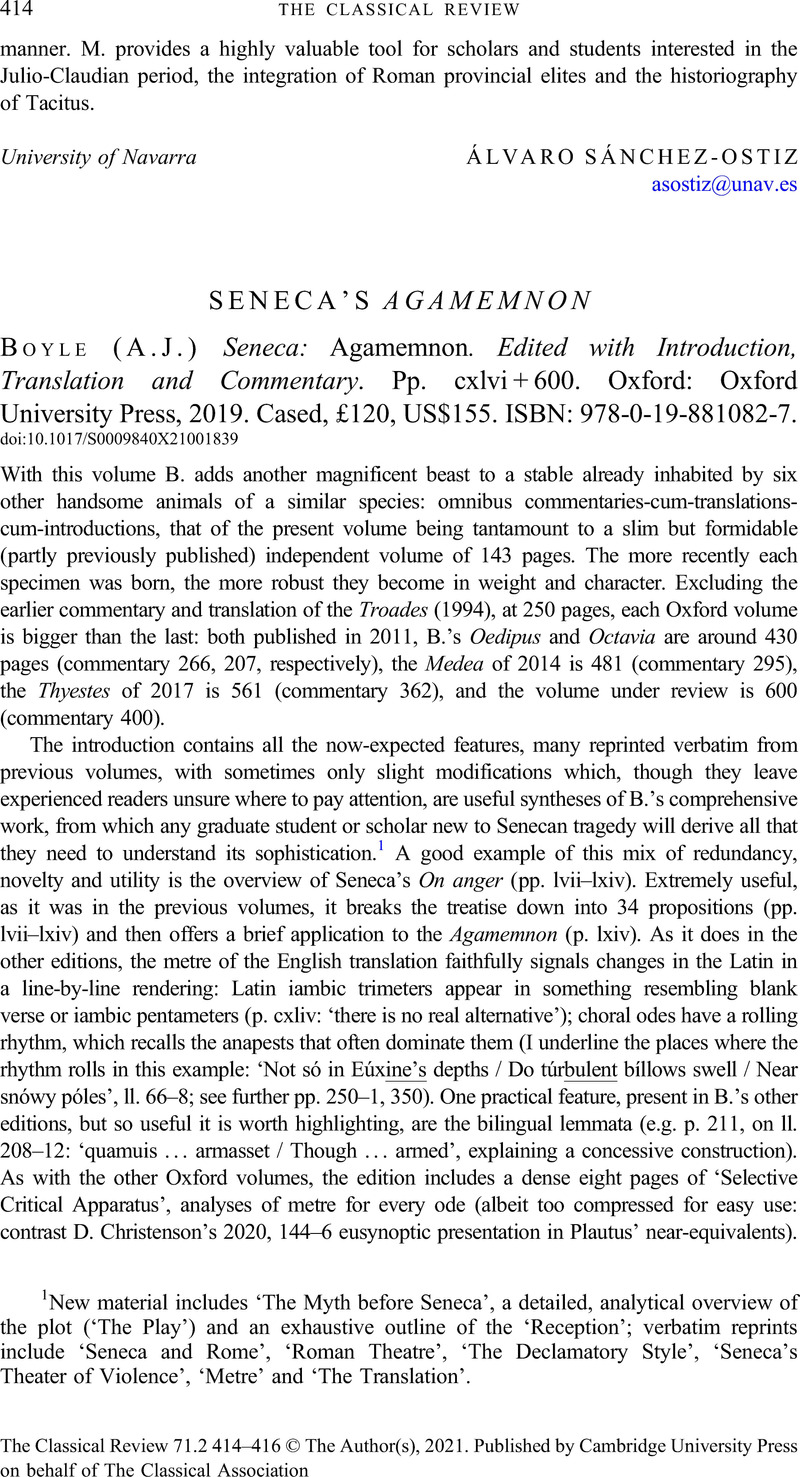No CrossRef data available.
Article contents
SENECA'S AGAMEMNON - (A.J.) Boyle Seneca: Agamemnon. Edited with Introduction, Translation and Commentary. Pp. cxlvi + 600. Oxford: Oxford University Press, 2019. Cased, £120, US$155. ISBN: 978-0-19-881082-7.
Published online by Cambridge University Press: 23 July 2021
Abstract

- Type
- Reviews
- Information
- Copyright
- Copyright © The Author(s), 2021. Published by Cambridge University Press on behalf of The Classical Association
References
1 New material includes ‘The Myth before Seneca’, a detailed, analytical overview of the plot (‘The Play’) and an exhaustive outline of the ‘Reception’; verbatim reprints include ‘Seneca and Rome’, ‘Roman Theatre’, ‘The Declamatory Style’, ‘Seneca's Theater of Violence’, ‘Metre’ and ‘The Translation’.
2 Pp. 101, 107, 140–1, 161, 163–4, 165–6, 177, 215, 245–7, 330–1, 333, 355–6, 358–9, 371–2, 390–1, 395–8, 400, 405, 408–11, 430–3, 447, 449, 452, 483 (‘Takes Aegisthus’ sword and stabs Cassandra’ – certainly the boldest: contrast T. Kohn, The Dramaturgy of Senecan Tragedy [2013], p. 65).
3 On female roles in the play see Kohn (2013), pp. 50–2. For an optimal template for gendered reading, rich with B.'s own ‘Roman referentiality’, see McAuley, M., Reproducing Rome (2015), pp. 215–18, 226–7CrossRefGoogle Scholar, with B. at pp. 232–3. On exemplarity in Seneca, see Langlands, R., Exemplary Ethics in Ancient Rome (2018), pp. 102–13CrossRefGoogle Scholar, Roller, M., Models from the Past in Roman Culture (2018), pp. 265–89CrossRefGoogle Scholar; B. cites related (earlier) work by both scholars.
4 Exemplarity: pp. 134, 343, 460–2; gender: ll. 955–78, especially at pp. 467–8: ‘Much of Senecan tragedy pivots around the relationship between parent and child’, which here amounts to mother and child: McAuley (2015), pp. 208–10; cf. p. 480 on l. 1009: dono, feminae stupro, dolo.



